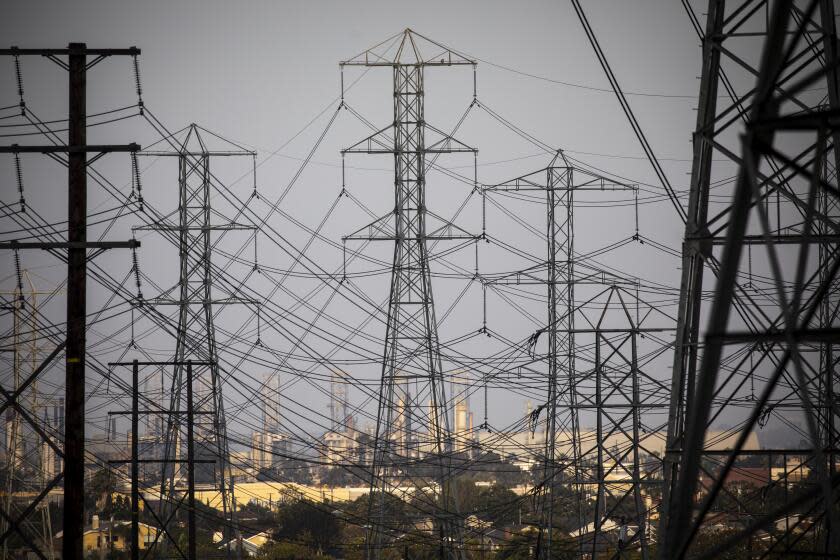Letters to the Editor: Adding a flat fee to electric bills won't help Californians

To the editor: The flat fee to most California electric utility customers of $24.15 will not promote clean energy. Instead, it will penalize those who use less than the average amount of electricity just because they are not low-income customers. ("High electric bills threaten California's clean future. This plan would help," editorial, April 15)
These include single individuals, frugal couples, people living in energy-efficient homes or people with solar panels. It will lay waste to the thousands of dollars they have invested in promoting clean energy.
The $24.15 fee is based on the Sacramento Municipal Utility District's flat fee. If the California Public Utilities Commission (CPUC) wants to imitate Sacramento's rates, it should also imitate its energy rates, which are much lower than what the investor-owned utilities charge today.
The 5-7 cents reduction in per kilowatt-hour energy charges will not encourage customers to adopt heat pumps or electric vehicles. If the state is serious about electrification, it should find a better way to lower rates, not just engage in a shell game between flat and variable charges.
As for equity, the state already provides a discount of 30% to 35% to low-income customers.
Ahmad Faruqui, Danville, Calif.
..
To the editor: The CPUC seems to expect a pat on the back for its proposal to stabilize electricity costs by including a fixed monthly charge and somewhat reducing the cost per kilowatt-hour.
Let's examine what its past actions have done.
For those California households looking to reduce their electricity costs and install solar panels and backup storage batteries, the CPUC (with extreme pressure from the major utility companies) passed "Net Metering 3.0," which reduced payments for electricity sent from these homes back into the grid by 75%.
Furthermore, the utility companies have imposed strict policies regarding rebates for installing batteries. One must live in a "fire zone" or meet low-income thresholds to qualify.
The actions of the CPUC continue to disincentivize going solar. Yet your editorial states that its fixed monthly charge "seems like a reasonable trade-off to make sure all Californians have an incentive to go electric."
Furthermore, unlike the federal government, California does not provide a tax credit for going solar. So where exactly are the incentives for California to truly move toward a clean-air environment? Your guess is as good as mine.
Frank Deni, Lake Forest
This story originally appeared in Los Angeles Times.

